Explore The Art Of Mezcal-Making At This Stunning Mexican Jungle Resort
Across bays, dirt roads and horseback, Naviva, A Four Seasons Resort’s Road to Raicilla is unlike any other five-star expedition.
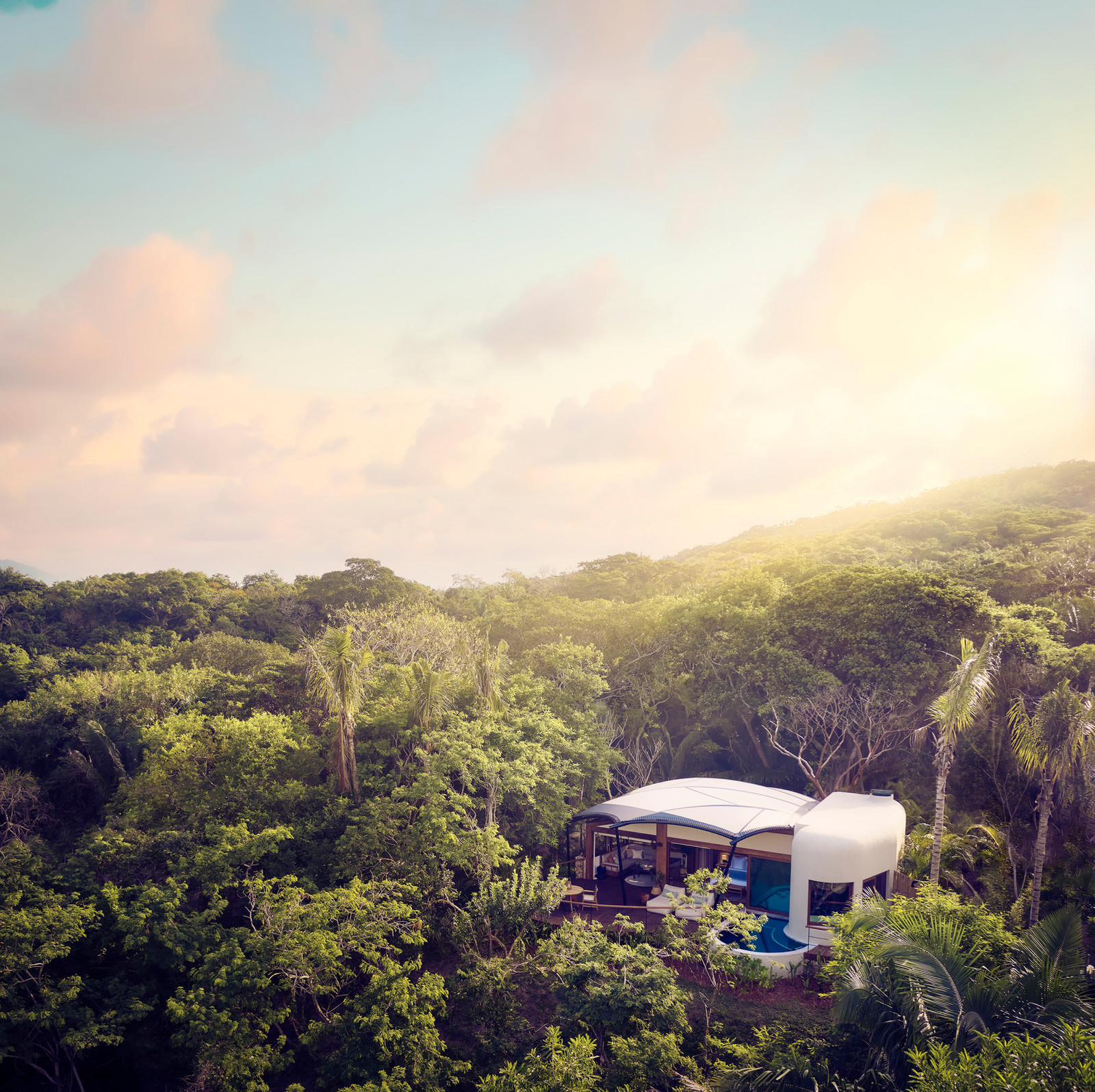
The intersection of white glove luxury with true authentic exploration is an extremely thin crosshair to hit. When successful, it’s usually in one direction. Meaning more attempts are taken at luxuriating adventure experiences like Serengeti safaris, cruises to the Galapagos and wild 4×4 off-roading than the inversion: adding true adventure to an ultra-luxury experience.
Perhaps it’s because the demand isn’t quite there; perhaps it’s because the gulf in blending an element of danger and intrinsic discomfort into 800-count Egyptian sheets, 12-dish omakase menus and hot-stone sound therapy spa sessions is far too wide. Probably a combination of the two. But when you do find it, man, that it is a rare gem worth sharing.
Such as the case with the innovative Naviva, A Four Seasons Resort concept. More specifically, with Naviva’s brand new “Road to Raicilla” experience. In the future we’ll dig further into the culinary pleasures, elaborate refinements and unique in-the-jungle offerings that make Naviva exceptional, but today we’re focusing strictly on their unique exploration of raicilla—a recently DOM-protected sub species of mezcal originating from the mountains and coasts surrounding Jalisco’s Puerto Vallarta area.
“I was having lunch in Vallarta with one of our guides, Arturo [Dávila], about something completely unrelated, and Arturo began to share the story of raicilla—how local and under the radar it is, how it is still produced in the old ancestral methods. I was immediately captivated on a personal level,” Naviva’s Resort Manager Eduardo Sampere explains of how the unusual concept first birthed.
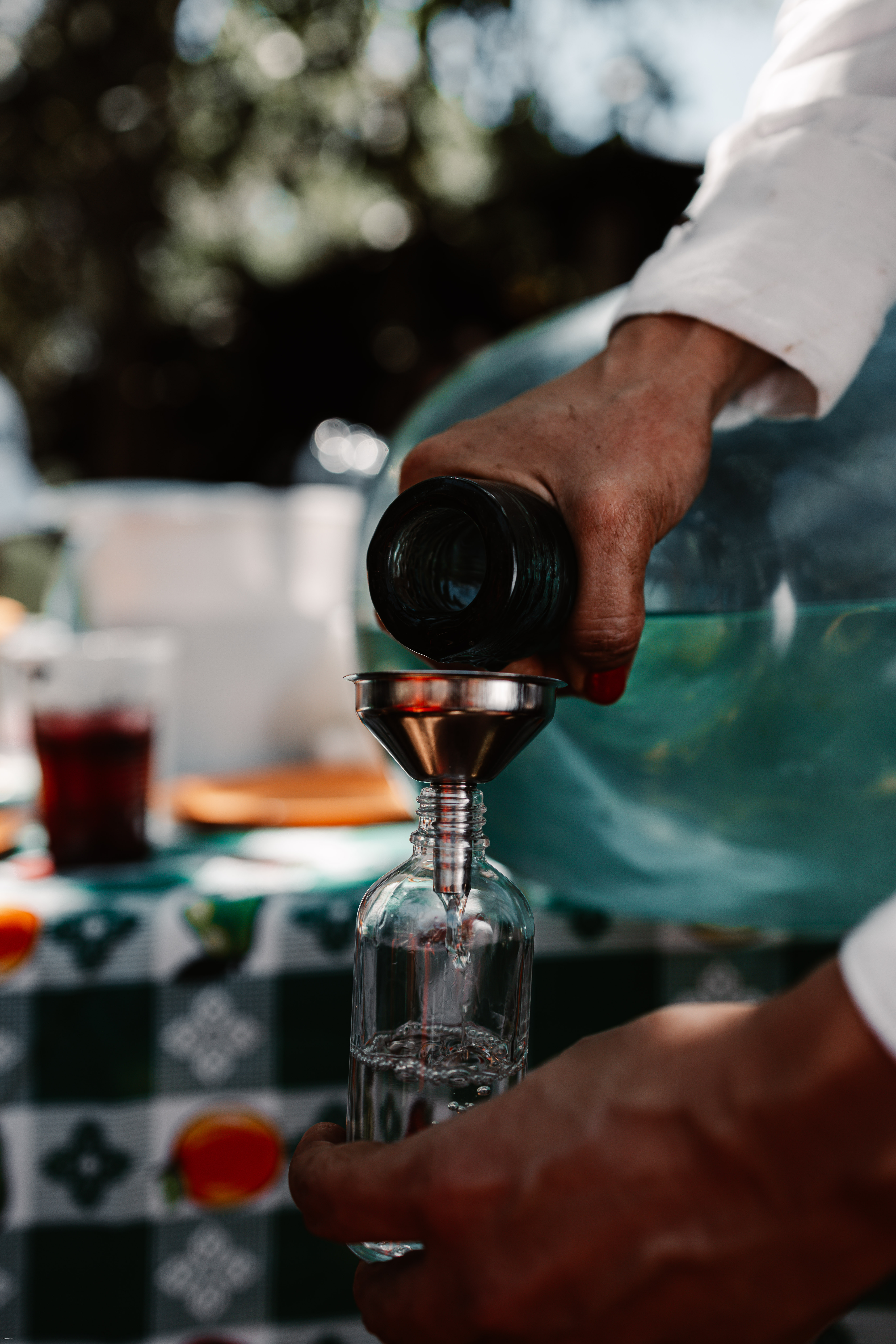
“As Arturo and I got to know each other better, and I learned more about his unique connections to the world of raicilla, I started seeing how an immersive raicilla exploration could be something special for our guests at Naviva.”
“The production of raicilla, due to its historical origins, biocultural territory, and unique production characteristics, exemplifies the relationship between humans and their natural environment, showcasing their ability to utilize local resources effectively,” Dávila told us later.
In Dávila’s view, witnessing how this truly ancient spirit is conjured from the juice of the local agaves is not industry, or even artistry—it is, in a way, a peek behind the sorcerer’s veil, a chance to witness ceremonies and brujeria passed along for countless generations.
“The puntas are prized across mezcal—electric, coursing with pure agave potency, fragrant like a nose punch—but also potentially toxic.”
The former Puerto Vallarta Director of the Department of Culture goes on to list how a litany of outside forces threatened the historical production of raicilla, beginning with Spanish King Carlos III banning all mezcals and pulques in 1785. This created a bootleg corridor from the remote southern coastal corridor, aka Cabo Corrientes, where it could be made in more clandestine pueblos, to the more populated eastern and northern shores of Vallarta Bay—smuggled by small boats under the cloak of night. Actual prison time and taxes continued to undermine raicilleros, as distillers are known. Finally, the rapid growth of tourism in Puerto Vallarta also took its toll, attracting able young workers from local communities.
“The tradition survived in some families who honored their heritage, however, who continued producing raicilla for their communities and personal use,” Dávila reveals. Now the Road to Raicilla highlights a trio of revered individuals—Hidelgardo Joya, Guadalupe García, and Adrián Rodríguez—who, “while not the only ones preserving this tradition,” he continues, “represent pillars of resilience, love, and commitment to raicilla.”
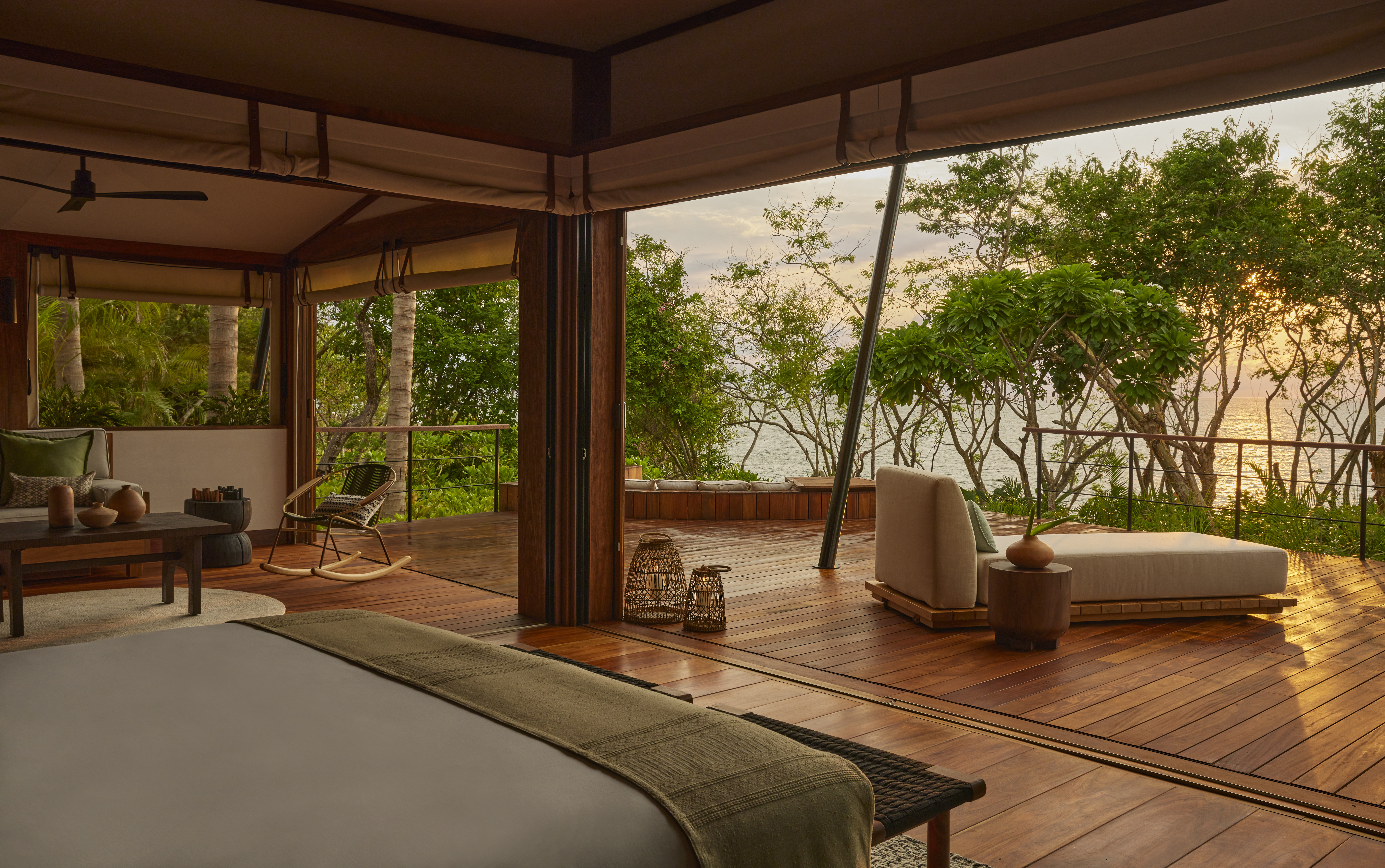
The Road to Raicilla journey begins as you awake just after dawn. The morning light hits the terrace of your expansive Naviva bungalow, the light pink on the mirror-like water from the private pool adorning each of these 15 suites. Outside the jungle is already alarmingly awake, the trees alight with the quarreling of morning birds. Inevitably the personal butler assigned to each cottage arrives at your door with the precision of a Swiss train, carrying whatever your preferred wake-up beverage might be—in our case a double cappuccino, perfectly frothy, made with beans locally sourced from the nearby mountains of Jalisco.
When a hotel will indulge, we always accompany that with tomato juice freshly squeezed from ripe local fruits, whirred to perfection and delivered in a cold glass. Naviva does indulge. By the time the juice arrives it has separated into a light pink water at the bottom with the pulp resting on top—the ideal lycopene-rich start to what will be a busy day filled with travel by powerboat, rickety van over rugged roads, and possibly even horseback. The stuff of Indiana Jones dreams, basically.
Jumping into a heavily modified, Naviva-branded Ford Bronco alongside Resort Manager Eduardo, we drive down to Punta Mita harbor and board a gleaming white 18-foot-long fishing boat, or panga. The sun is out by now, hot and direct; Vallarta Bay, the third largest in the world, glassy. The hour-long jaunt of cool spray and warm wind to the cheeks makes for a heartening start to the day as blue-footed boobies ride the drag of the boat, coasting just overhead as they ace the morning hunt for prey—occasionally nose-bombing into the clear Pacific water for sustenance. With every passing moment the distant hills on the southern coast slowly enlarge, filling the soul with curiosity.
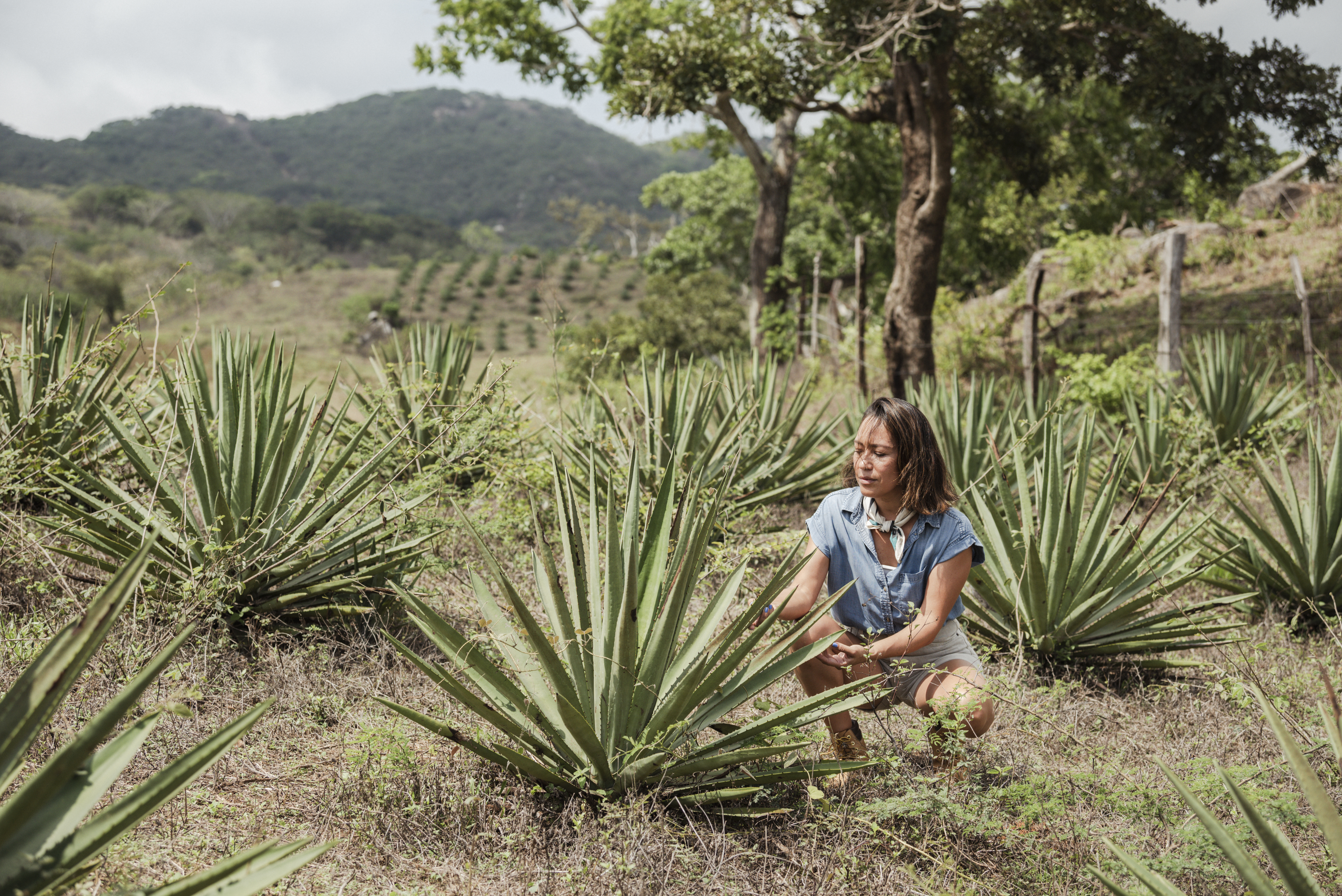
“These guys we’re going to visit, Hidelgardo Joya and Adrián Rodríguez, experienced their generational handover years ago; they understood their role in keeping raicilla alive in their families and communities,” Dávila informs us all with professorial wisdom as we slice across the deep blue bay. “They represent the raicilla of different communities, keeping their own secrets and special profiles that nobody else has.
“These masters exemplify a worldview and way of life vastly different from modern times,” Dávila continues. “Their knowledge and traditions are invaluable. And with their passing, much will be lost.”
OK, time for some background. There are two major types of raicilla: mountain and coastal. Located on the hills above the northern coast of Vallarta Bay, mountain raicilla tends to be made with the agave maximiliana, aka “lechugilla,” and also uses traditional alembic stills. Because of far superior infrastructure, with the ability to move both ingredients and final product, mountain raicilla is much more common in today’s marketplace.
Coastal raicilla is made in the hills where we’re headed, in the Cabo Corrientes region above the much less developed southern coast of Vallarta Bay. These villages can only be accessed by boat and a single dirt road often made impassable by the rainy season. These tabernas, or distilleries, tend to use Filipino stills—more on that later—and a much greater variety of agaves. These remote villages can be accessed only by boat and are visited by tourists at the frequency with which astronauts travel to the dark side of the moon.
While we have explored mountain raicilla before—climbing up to the villages around San Sebastián del Oeste searching for small raicilleros selling their wares out of old Fanta two-liters—our eagerness to witness the coastal variety grows as the green mountains inflate on the horizon.
We pass tiny fishing villages only accessible by boat, like Yelapa, and finally work our way west towards Chimo: the tiny hometown of our other guide Larissa Carrillo. A salt-burn dinghy rows out to shuttle us from our boat to shore, where we’re greeted by Larissa and a quick breakfast of bean tacos, coffee and hot chocolate on the sand. Every moment the day grows more glorious.
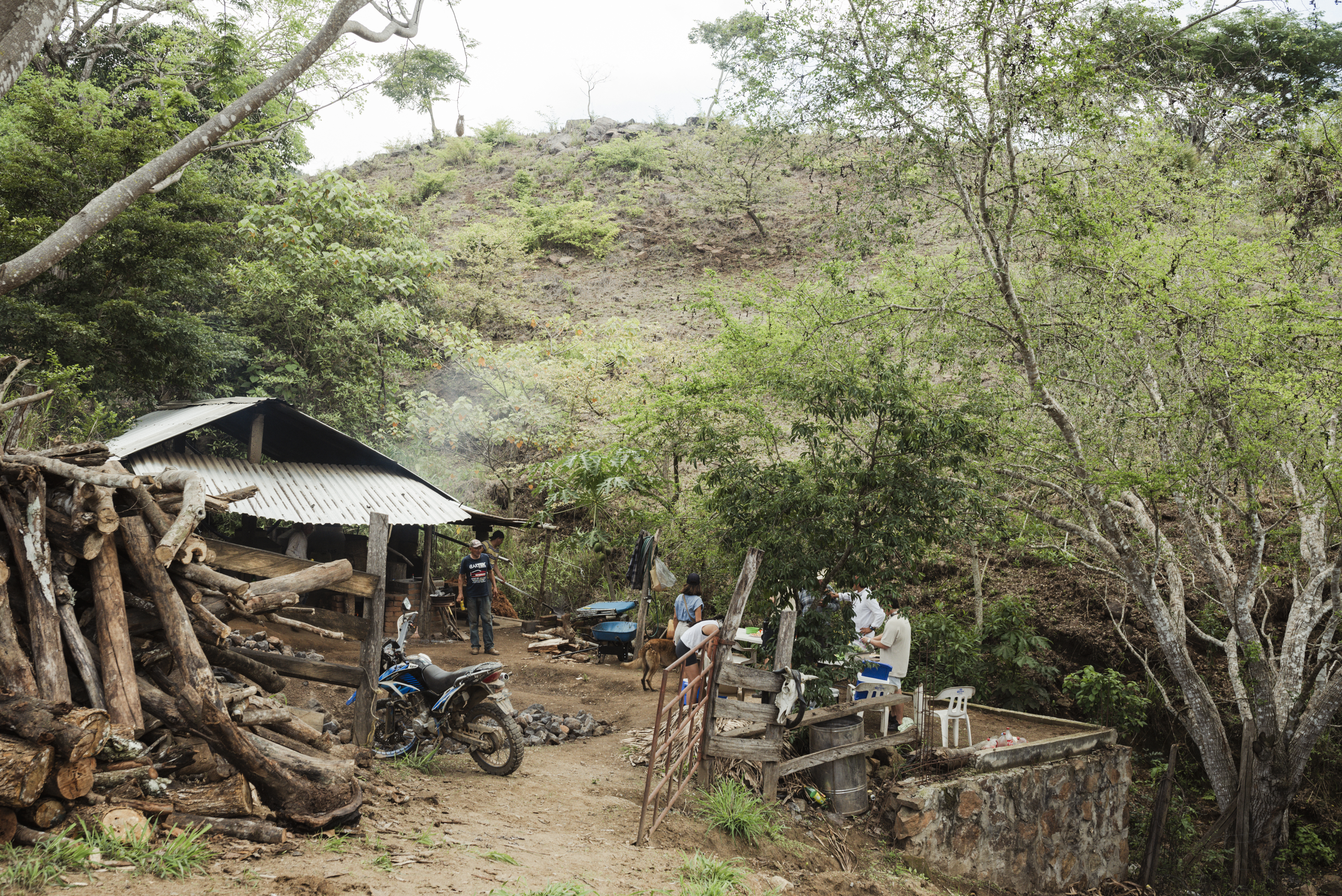
Soon we’re loading up into one of those hilariously narrow vans unseen in America and driving up the steep hillside towards the tabernas, the tiny Toyota bouncing from the rugged road. Our first stop is Japo’s—a dusty ranch of small buildings near the Sierra lined by red, purple and royal blue bougainvillea almost iridescent in the hot sun. This is the home of Hildegardo Joya, the most revered and oldest active raicilla producer in the entire Cabo Corrientes region.
He ambles down from his casita to greet us, stout like a Tolkien dwarf, wide smile etched across his leathered face. Joya, better known as Japo due to Asian-reminiscent facial features, is currently 92 years old—but you wouldn’t know it from his firm gait down the hill to his distillery or his sharp eyes and lucid sense of hospitality (and humor). He slips off his cowboy hat and invites us inside his taberna; despite the torrid heat outside, the workspace is cool, dank and dark.
Water trickles in from a spring hundreds of yards away to a Filipino still, one of the unique aspects of coastal raicilla. Filipino stills employ two copper pots, one above and one below a hollowed-out parota tree trunk, to run the fermented agave juice through. They are primitive but mobile, and can only be used a couple times before needing to be replaced—and they make a magical elixir out of the still that radiates with agave and grass fumes.
“Their knowledge and traditions are invaluable. And with their passing, much will be lost.”
The origin of these Filipino stills is in and of themselves a tale of ancient cross global cultural exchange—a nearly half-millennia old gift from Filipino sailors who worked the Galeón de Manila (aka Manila galleon). A munificent Spanish trading route linking Acapulco (a major port in the Viceroyalty of New Spain) with Manila, the main port of its Asian territories. As most were slaves, many sailors would slip away from their ships if the opportunity presented itself and escape into these hills.
The Galeón de Manila Lasted two and half centuries, from 1565 until Mexico declared Independence in 1815, and in that timeframe experts estimate some 75,000 Filipinos escaped and assimilated with the natives of this area, disappearing into their midst…and gene pool. Some suspect Japo could descend from this survivalist stock.
“Japo possesses one of the most distinctive raicillas, a craft he has perfected over time by refining techniques from the meticulous cleaning of his plots to the respect for the time each agave plant needs to be harvested,” Dávila will tell me later, mentioning how Japo only harvests his plants under the light of a full moon, as the gods decree.
“His methods of cooking, fermentation, and distillation contribute to giving his raicilla a unique touch highly appreciated by many.”
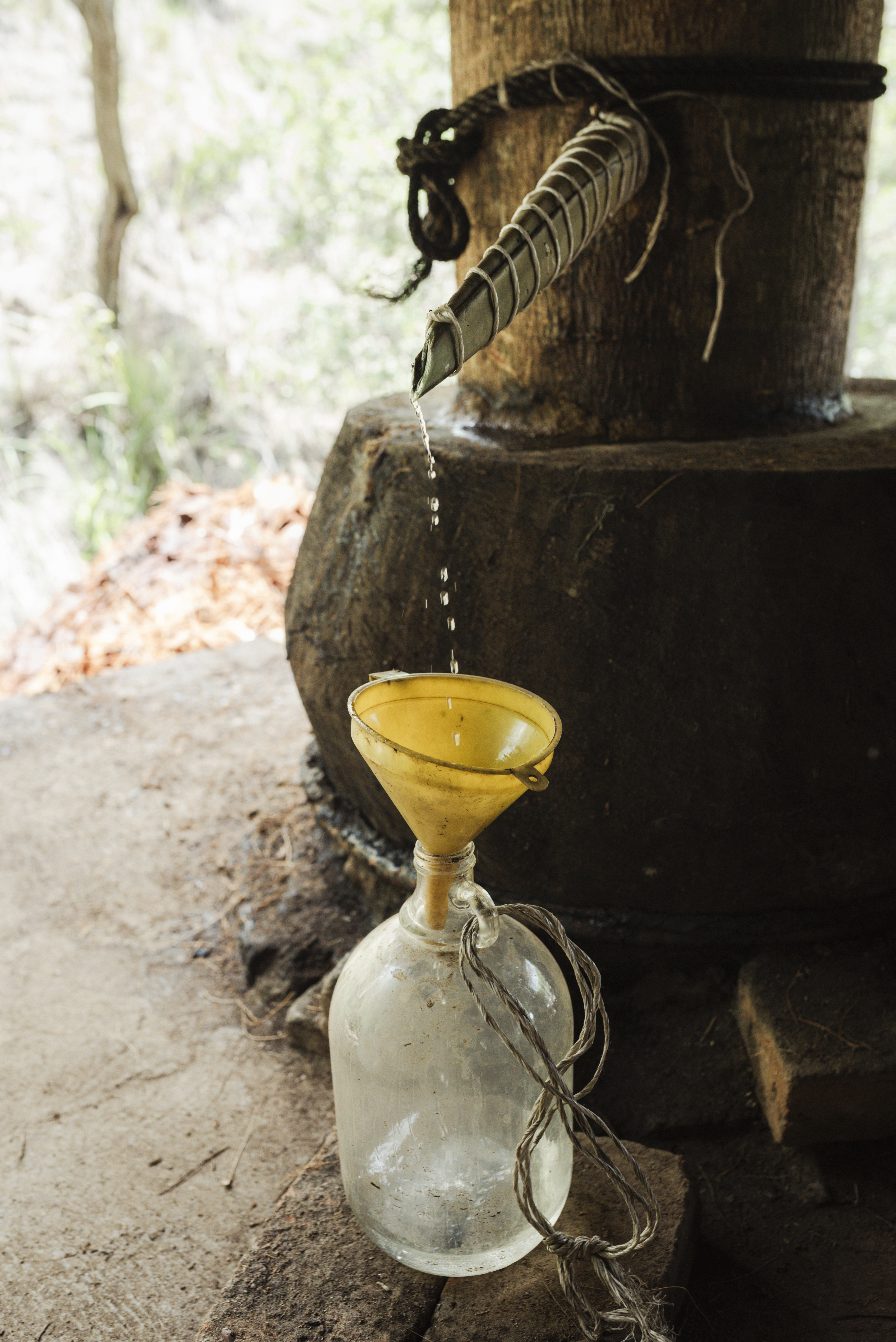
This touch was so treasured that esteemed mezcal label Mezonte released a highly coveted Raicilla Japo bottle in 2019 that sells for hundreds of dollars…if you can find it. If we’re all lucky we may soon have another option, as our guide Larissa, Japo’s niece, is currently trying to import his juice under her Eterno Embrujo Raicilla label.
We spend an hour or so sitting under the shade of the eucalyptus trees chatting with Japo and his crew, accompanying samplings of his spirits with sliced wet queso made by a neighbor. The highlight being a jug of chereca, the highly coveted puntas of the first distillation. As the initial juice from the first distillation, the puntas are prized across all Mexican spirits—electric, coursing with pure agave potency, fragrant like a nose punch—but since only distilled once also potentially toxic, so a bellwether of the raicillero’s skill. Needless to say, Japo’s chereca justifies crossing bays and climbing wild mountains.
All too soon we must break and drive further into the hills. The dirt and occasionally paved road eventually delivers us to Los Tres Hombres, the taberna of one Adrián Rodríguez.
“Like every man truly connected to the land, Adrián lives for it and with it,” Dávila tells us on the ride to Los Tres Hombres, growing our anticipation for the visit. “He forges a deeply personal relationship with his surroundings, understanding and caring for them.”
After a warm welcome, we walk to the taberna where Adrián’s sons Joel and Paulo are midway through a distillation. We watch as he caulks some gaps in his still with lica, the roasted and mashed piña heart removed for its bitterness. Out of the parota trunk a hot clear liquid pours into bucket. Paulo tips his freshly conjured raicilla straight from the still into tiny wood copitas, and passes one to me. I take a cautious whiff; the hit is stiff, the alcohol wallop bracing, but the fragrance sweet like over-ripe banana. The taste both tart and floral, with layers of mango and pear.
Adrián waves us over, beckoning us to the hills that protect his taberna. “Adrián is unique in that he has been working to plant and mix multiple agaves together, growing fruit in between the different variations in an effort to ensure that the agave survives,” Dávila explains as we begin to follow the venerable raicellero up into the slope. “He is passionate about uncovering new solutions to the changing climate and evolving world, looking to mother earth for help in preserving the tradition of raicilla.”
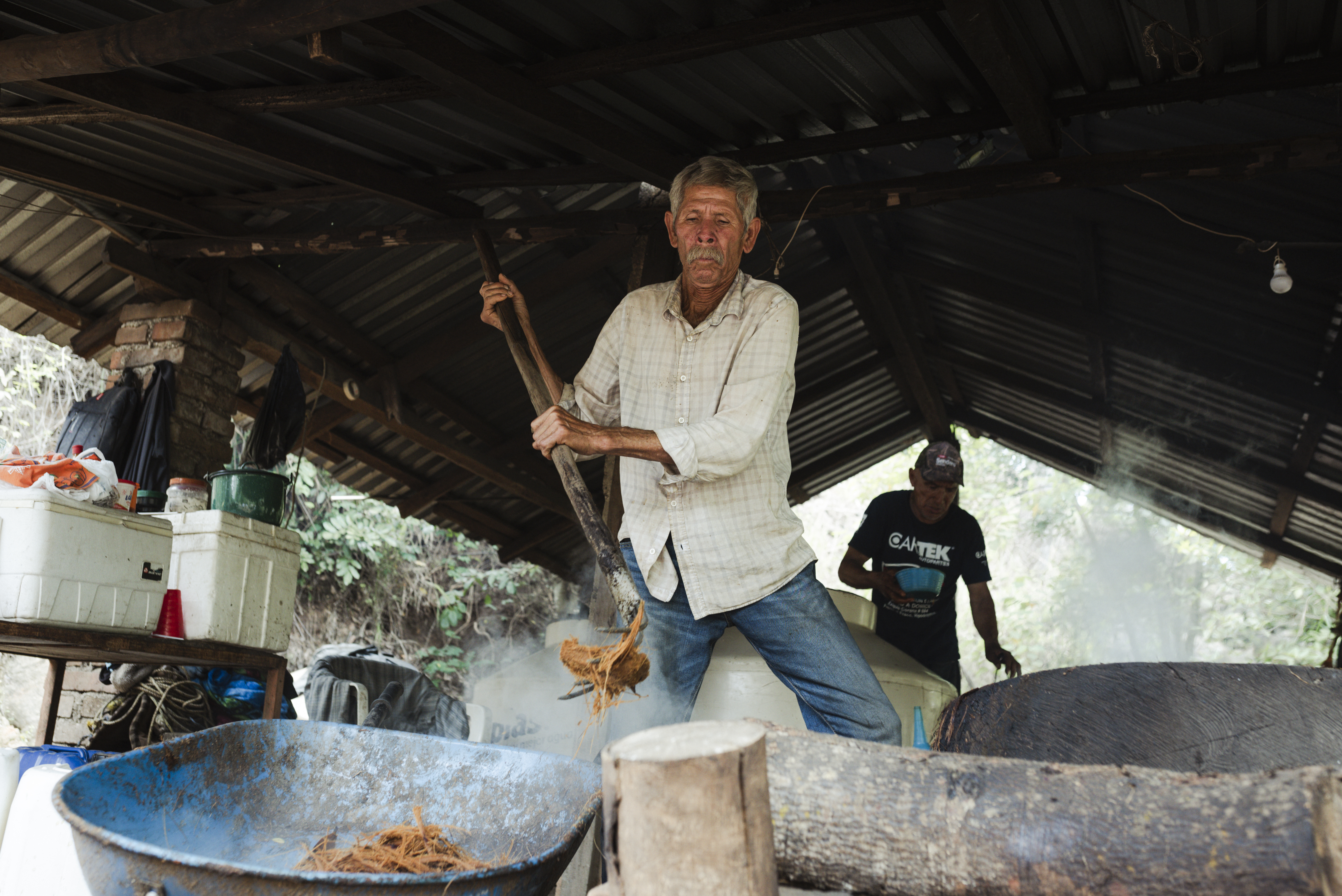
You see while Japo hones his technique exclusively on Amarillo agave, Adrián opts for an almost inverted approach. His sorcerer’s super skill lies in botany, collecting plants from across Mexico to grow and cross-breed with other species, creating a true Noah’s Ark of agave on the hills surrounding his taberna. More slender than Japo, dressed in stiff dark denim, a red and blue gingham shirt and cowboy hat, Adrián walks up the ridge pointing at a random, spiny succulent and whispers some arcane secrets through a Sam Elliot mustache firmer than a steel rake.
We follow obediently, leaning in to hear his secrets and pollinating techniques. He points to the trees, identifying wild-plumaged birds you never would have spotted with your own eyes. As he walks, Adrián picks the sharpest agave needles from the path, subconsciously pruning his garden as he roams.
“The aroma of burning wood and sizzling fat rises up the hills and blends with the breeze of hot sage and yellow grass, and I nearly pass out from joy.”
While we walk, below his wife Dionisia grills slabs of steak over an open fire next to the taberna. The aroma of burning wood and sizzling fat rises up the hills and blends with the breeze of hot sage and yellow grass, and I nearly pass out from joy. I could spend days here following Adrián around, learning about the intricacies and particularities of each specific sub-species and the wild hybrid he’s created. The concept isn’t just to preserve the different agaves and see what magic they create in his still, but to breed more pest- and drought-resistant plants and aid their bloodline. His dedication is nothing short of extraordinary.
When our hunger is hitting redline we follow Adrián back down towards Dionisia toasting tortillas. Dogs lie in the mottled shade in bliss, still like a summer pond with the exception of rear legs occasionally twitching as if chasing rabbits in a dream. Next to them, our driver naps in a hammock like a background character in a Speedy Gonzalez cartoon, hat tilted over his eyes.
Lunch, as you can imagine, is delicious, the carne asada aided by wild cherry tomatoes and no less than three different salsas. Joel mixes several cocktails with their latest moonshine, a white label distilled specifically for Naviva—one drink with prickly-pear and another passion fruit, displaying a deft mixology skill on par with the best Barcelona cocktail bars.
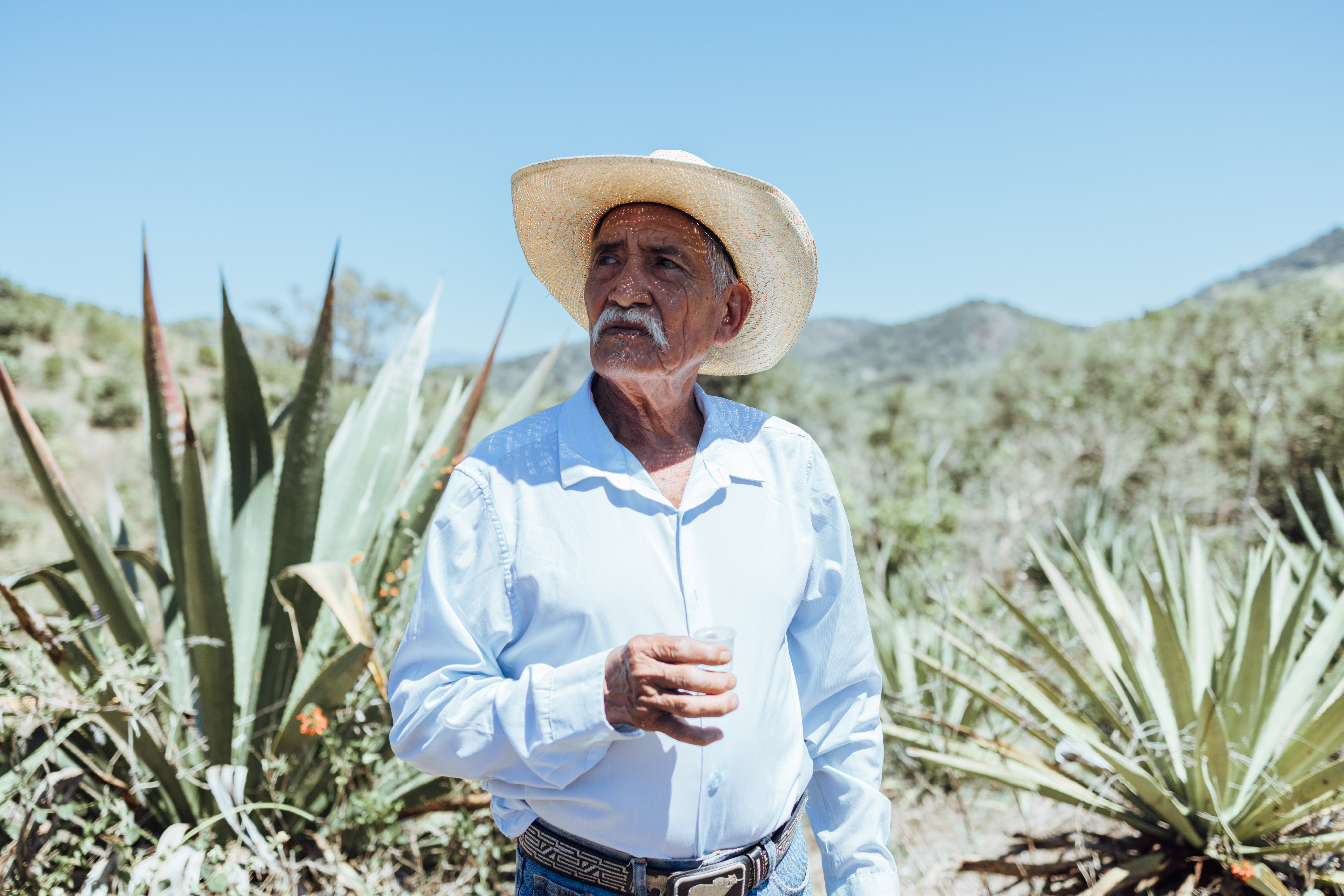
When lunch is finished and we’ve indulged in our final copita of Adrián’s silver magic, we load up one last time in the tiny Toyota and work our way down the mountain, a convulsive journey that is breathtaking both by view and by the crags that rock the poor van like swells. Sated in both stomach and spirit, the day’s adrenaline begins to subside, the fatigue of a long day’s adventure settling in. It is here when the courage and craziness of the trip begins to hit me—that a five-star, five-diamond, $4,000 dollar-a-night resort would dare to offer such a raw, visceral experience to what are probably some pretty pampered clientele.
Personally I would do it a thousand times, elated by the concept of clinking copitas with Japo or Adrián on a daily basis. But what about those who travel to a Four Seasons to have sushi and piña coladas delivered to their private bungalow in the jungle? Honestly the idea is as brave as it is illogical. Certainly not for the average guest, but for those who are willing to enjoy/endure the early wakeup, boating across one of the world’s biggest bays, being rocked in a tiny Toyota van through primitive dusty roads, all to meet the magicians behind the once-dying art of raicilla, they will experience something truly unique, and beautifully inspiring.
“These remote villages can be accessed only by boat, and they’re visited by tourists at the frequency with which astronauts travel to the dark side of the moon.”
“The first time I visited the Coastal Raicilla area, I immediately sensed how rare and special it was,” Eduardo tells me later when discussing how in the world he came up with the Road to Raicilla concept. “I drove there alone, journeying from the mountains through the jungle to the remote coastlines, and I was stunned by the area’s natural beauty and the kindness and authenticity of the people. The destination is so untouched and unspoiled, despite being on the ocean in our tourist-heavy destination like Mexico.
“The Road to Raicilla is the perfect experience for Naviva because it’s not for everyone–it is unique, authentic, and speaks to the diverse interests of our guests,” he continues. “For me, it was love at first sight.”
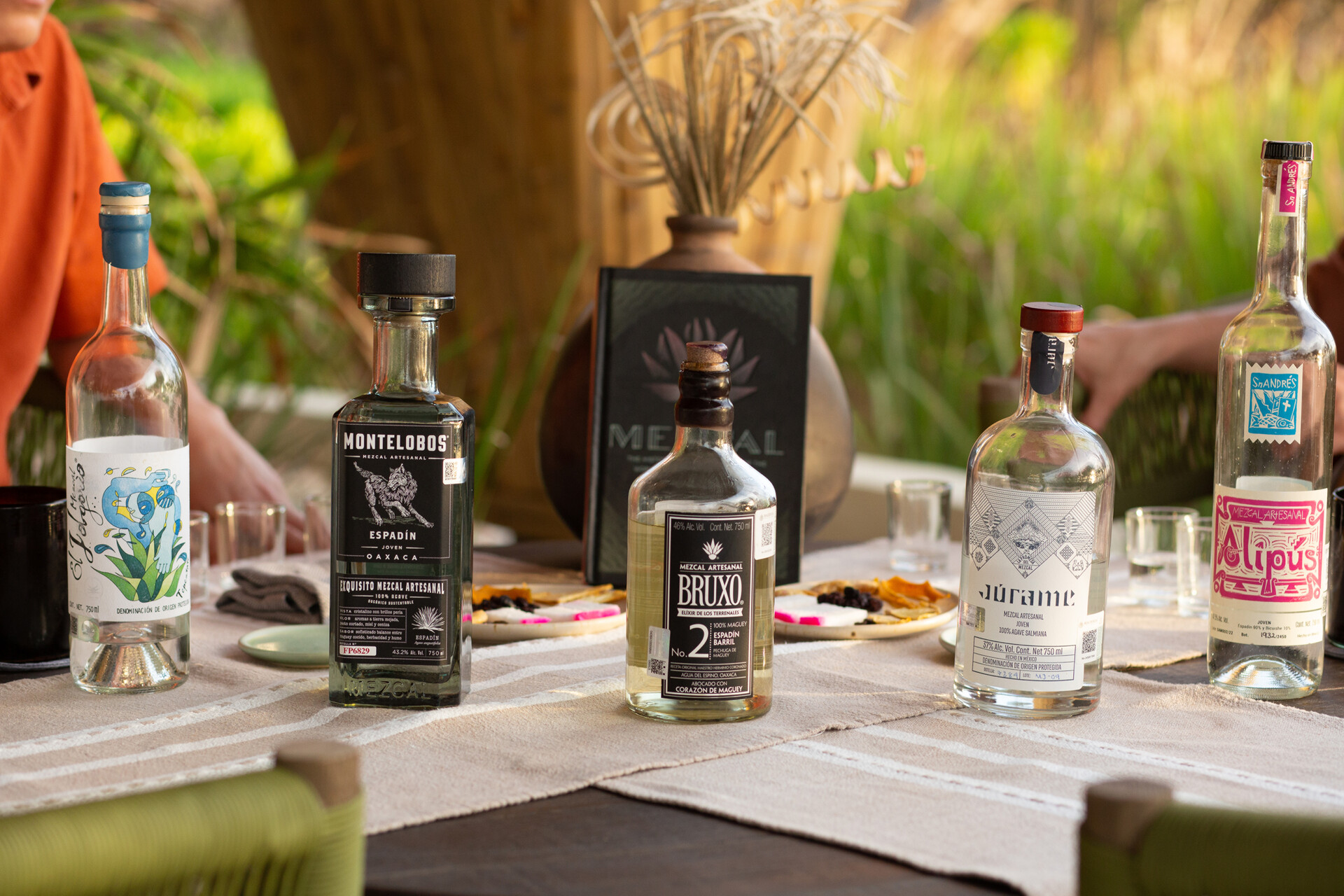
Follow Deputy Editor Nicolas Stecher on Instagram at @nickstecher and @boozeoftheday.
